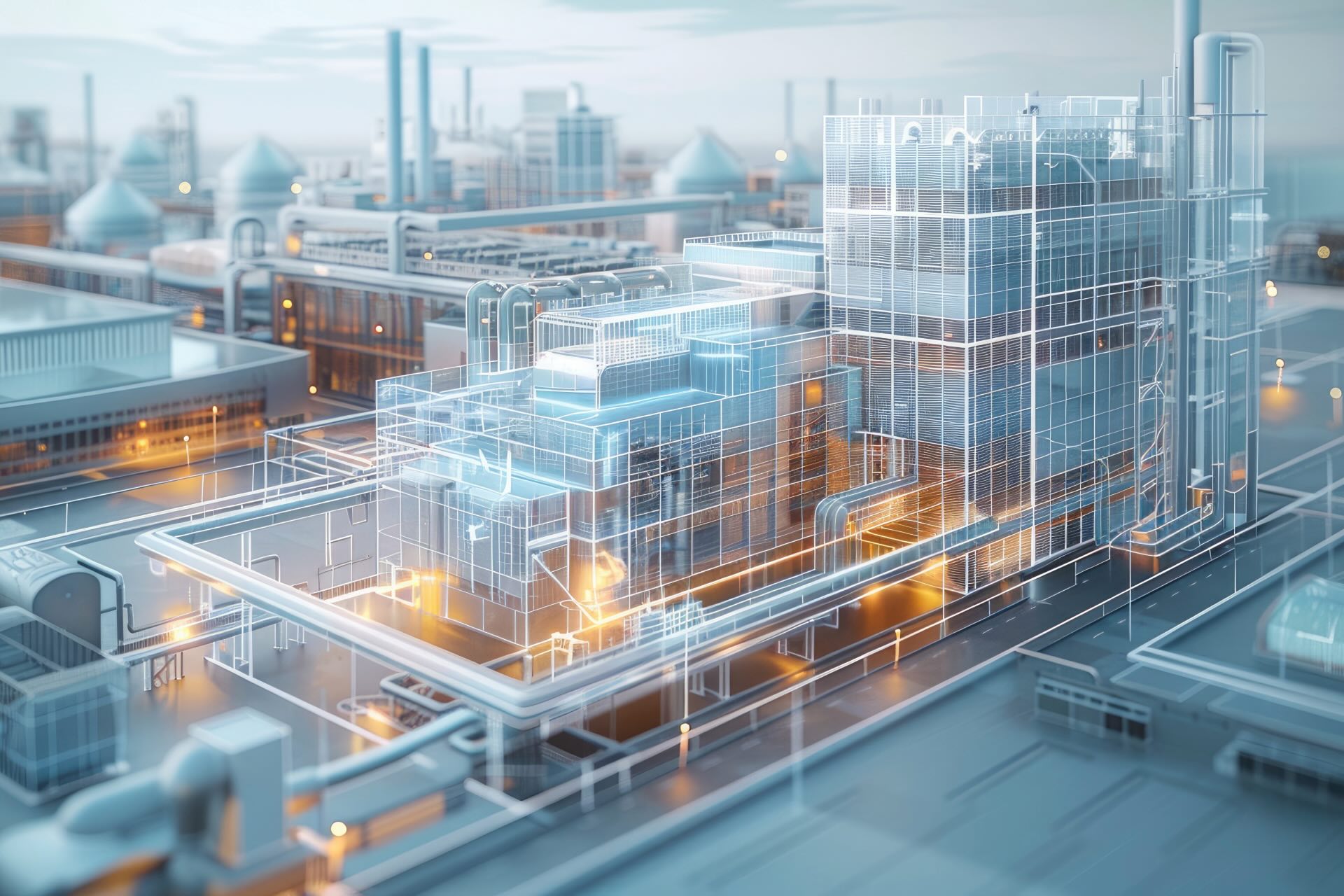As AI and other cloud-based technologies gain more traction, digital twins are growing in popularity as a way to enhance efficiency and drive sustainable transformation across industries. While digital twins could be gamechangers, just how long will it take to see them running at full capacity?
What are digital twins?
A digital twin is a virtual representation of a physical asset, system, or process, continuously updated with real-time data. A model is created to represent a real-world asset, such as an office building or airplane. Then, data is collected to populate the model and assist in making key predictions, like when the asset will need maintenance, or how a different power supply will impact the energy efficiency of the building.
The key difference between a standard computer generated model and a digital twin is the continuous assimilation of data over time. By simulating different scenarios and outcomes, digital twins help organisations make informed decisions about energy use, carbon reduction, and infrastructure development. The digital twin can offer previews of key changes, providing organisations with more information about the impact of their decisions – before they commit to a course of action.
How will digital twins impact the energy sector?
Digital twins have the potential to transform energy use in buildings and industrial processes by enhancing efficiency, resilience, and sustainability. By creating virtual replicas of physical systems, they enable real-time monitoring, predictive maintenance, and optimisation. This allows organisations to reduce energy waste, improve operational efficiency, and lower carbon emissions.
For industrial processes, digital twins can fine-tune production systems, enhance battery storage management, and streamline resource use. In buildings, they support smarter energy management by improving heating, cooling, and lighting efficiency. By harnessing digital twin technology, organisations can make data-driven decisions that cut costs and drive meaningful carbon reductions.
Digital twins in real life: University of Glasgow
The University of Glasgow is using digital twin technology to enhance energy efficiency and support its net zero ambitions. In collaboration with Glasgow-based firm IES, the university has created digital replicas of three key campus buildings: the James McCune Smith Learning Hub, the Advanced Research Centre, and the University Library. These digital twins integrate real-time data with advanced simulation models to assess energy performance, identify inefficiencies, and optimise building operations.
By analysing factors such as heating, cooling, and occupancy patterns, the technology helps reduce energy waste, lower carbon emissions, and improve sustainability across the campus.
What are the barriers for digital twin deployment?
Despite their potential, digital twins face several hurdles that must be addressed before they can start being adopted en masse.
- High costs and technical complexity
The development and maintenance of digital twins require substantial investment in software, expertise, and data integration. This can be a barrier for smaller organisations with limited resources.
- Data integration and accuracy
Digital twins rely on large volumes of data from various sources. Ensuring consistency and accuracy is critical, as errors in data can lead to unreliable simulations and poor decision-making.
- Cybersecurity risks
As digital twins store and process vast amounts of sensitive data, they are vulnerable to cyber threats. Strengthening cybersecurity measures is essential to prevent unauthorised access and data breaches.
- Ongoing maintenance requirements
To remain effective, digital twins must be continuously updated to reflect real-world changes. Without regular maintenance, discrepancies between the digital model and the physical asset can reduce its usefulness.
The future of digital twins in net zero strategy
To unlock the full potential of digital twins, businesses and policymakers must address these challenges by investing in research, improving data governance, and developing robust security frameworks. With the right approach, digital twins could become part of the UK’s strategy for achieving net zero, driving sustainability, efficiency, and innovation across multiple sectors.
If this or any other content has interrested you, get in touch for a no-obligations chat with one of our specialists at Sustainable Energy First.














